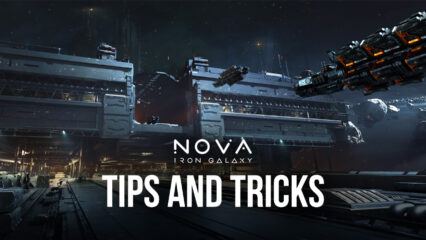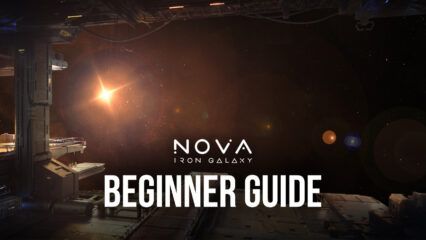Nova: Iron Galaxy - A Guide to Shipbuilding

It’s the perfect time to play Nova: Iron Galaxy again and one of the things that we enjoy most in the game is building our own ship. Shipbuilding is a central part of the game and is something that a lot of new players don’t really take seriously until they realize that it’s already too late for them to turn back. If you’re a new player, we highly recommend learning more about how you can build the perfect ship by learning the fundamentals of what makes this mechanic so unique in this game.
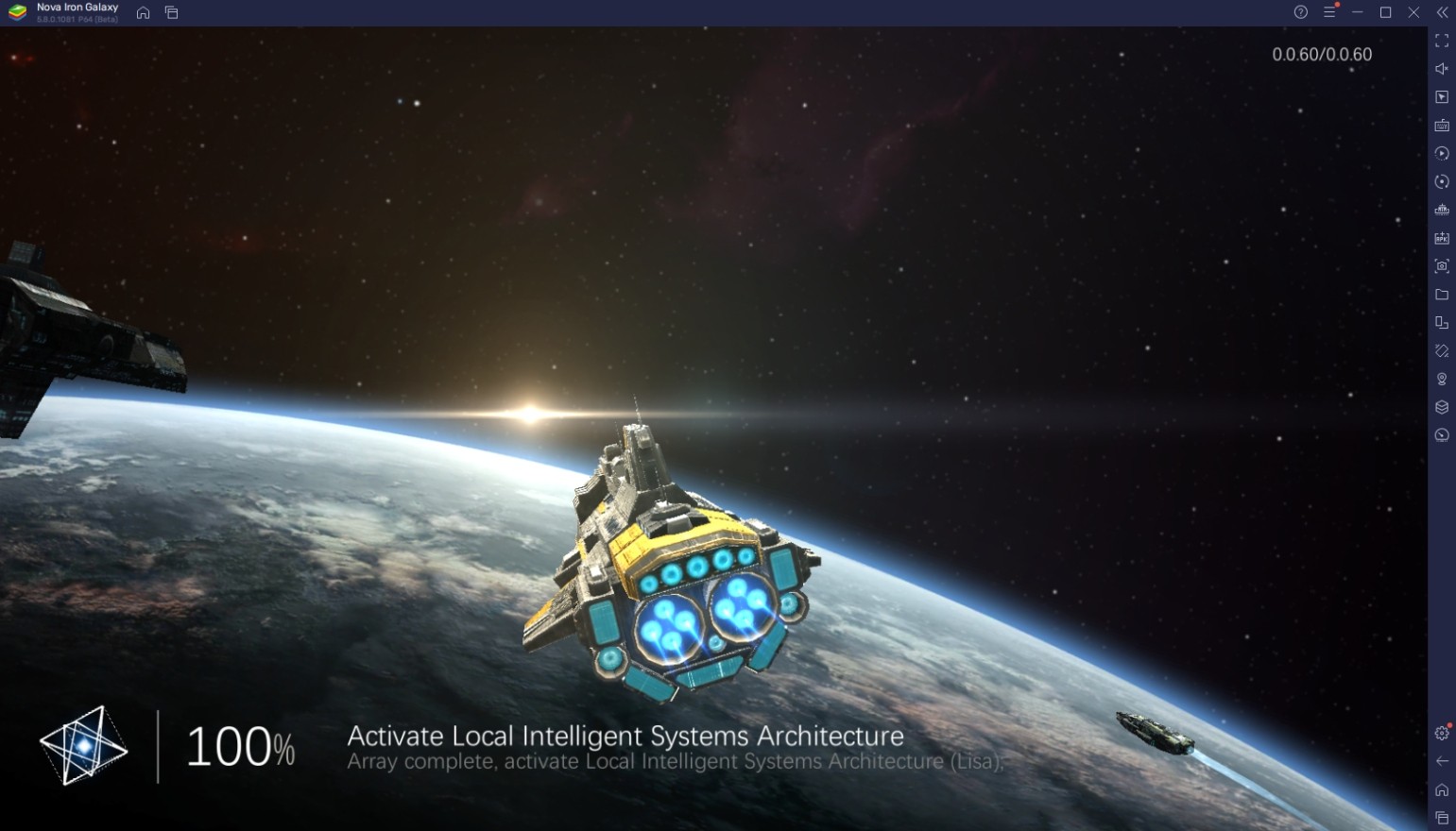
Shipbuilding in Nova: Iron Galaxy involves a lot of mechanics that players need to take note of when they’re looking to construct their first spacecraft. The game offers many ways to customize your ship and it’s a good idea to be familiar with the differences between these parts to help you build a decent ship in the future. Also, make sure to check out our Beginners’ Guide to help you get acquainted with some of the more important parts of the game that you need to know about as a new player.
Assembling & Editing
Assembling is the first step to building a perfect ship. This involves building a new ship from scratch by using components and an unused hull. Players can assemble as many ships as they want as long as they have the materials that they’ll need to create a ship but take note that you can only fit as many ships inside the fleet as your admiral allows you according to their leadership points. Regardless, it’s a good idea to have extra ships in case existing ones get destroyed or severely damaged.

Editing a ship is a lot more complicated. Editing can be done to any assembled ship by switching the components they currently have equipped with ones that you think might be better for the ship. You can edit your ships as much as possible as long as you have parts that you can use to replace them. Replacing an item doesn’t include additional costs nor does it affect your used components in any way, so feel free to experiment with various items to see how they affect your ship.
Choosing a Hull
Choosing a hull is the first step to assembling a ship. The Hull is basically the centerpiece of your ship and determines what model of spacecraft you’re going to build. Hulls can be acquired as rewards from missions and skirmishes, but the rarest ones can only be acquired in the Black Market. Hulls are the only part of your ship that can’t be upgraded or replaced, so you’re basically stuck with the one you’ve got until you find a replacement model that’s stronger than your current one.
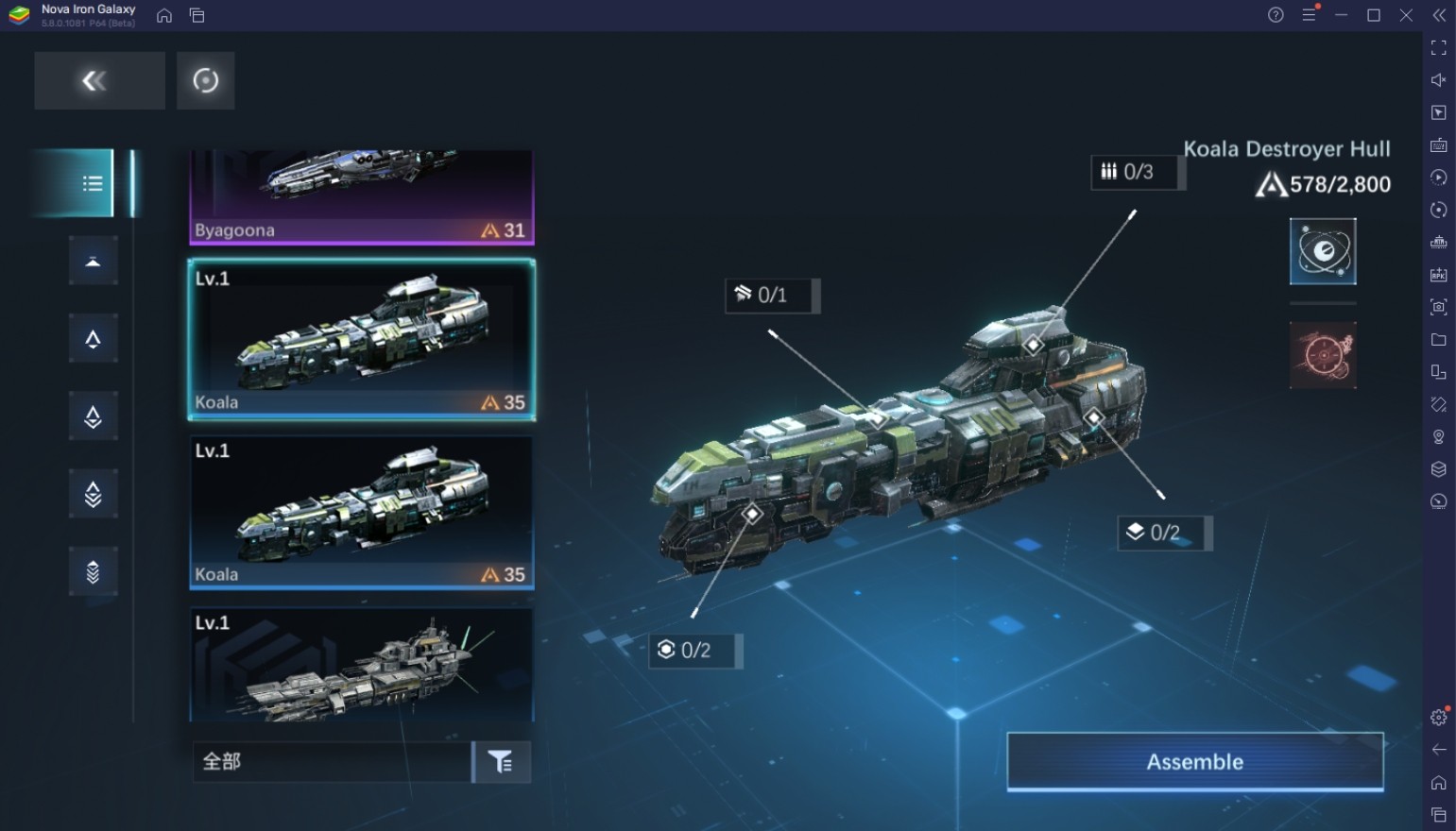
Each hull can only fit in a certain number of components. The weaker hull models only have a limited slot in their hulls meaning that they can only get to a certain point in terms of raw strength. Take note that once a hull has been used to assemble a ship, you can no longer use that hull for another ship since it’s basically the skeleton of the one you’re using now. It’s a good idea to collect unique hulls and construct a good number of extra ships that are ready to go at a moment’s notice.
Constructing Components
Components are also important because they are used to determine whether your ship is strong or weak. Players can construct acquire components by defeating enemies, getting them from the Black Market, or constructing them on their own. The best way to acquire components is by constructing them in the station, which you can do as many times as your factories allow you to. Players will be able to unlock new factories as their commander level grows, meaning they’ll be able to construct more components at once.
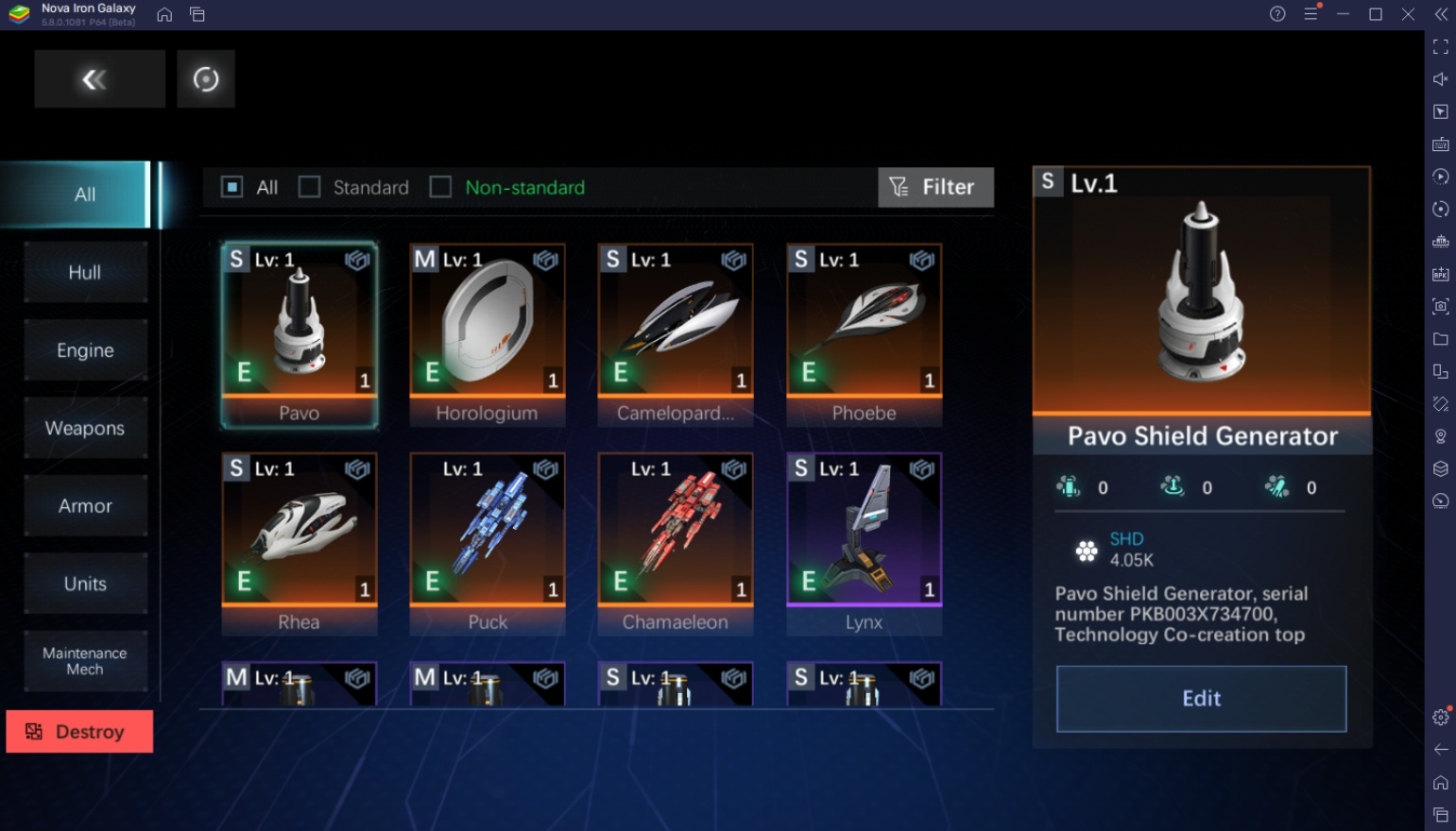
Each component requires a certain amount of time to manufacture, according to the rarity of the component being constructed. It’s a good idea to keep constructing components that you’re low on even if you think you’re not going to use them just yet so that you’ll be able to have them ready in case you’re ready to assemble or upgrade another ship. Also, you can trade components in the Orders tab to get very good rewards that you might need later on so you should manufacture every type of component.
Component Rarities & Stats
Rarity is what determines whether a component is good or bad most of the time. This is because each component contains a certain stat value that increases as the rarity gets higher. There’s essentially no reason for players to get lower-rarity components because there is no advantage to be had from these items. There are five rarities in this game which are common, uncommon, rare, epic, and legendary. Having as many legendary ships and components is the goal to building the ultimate fleet.
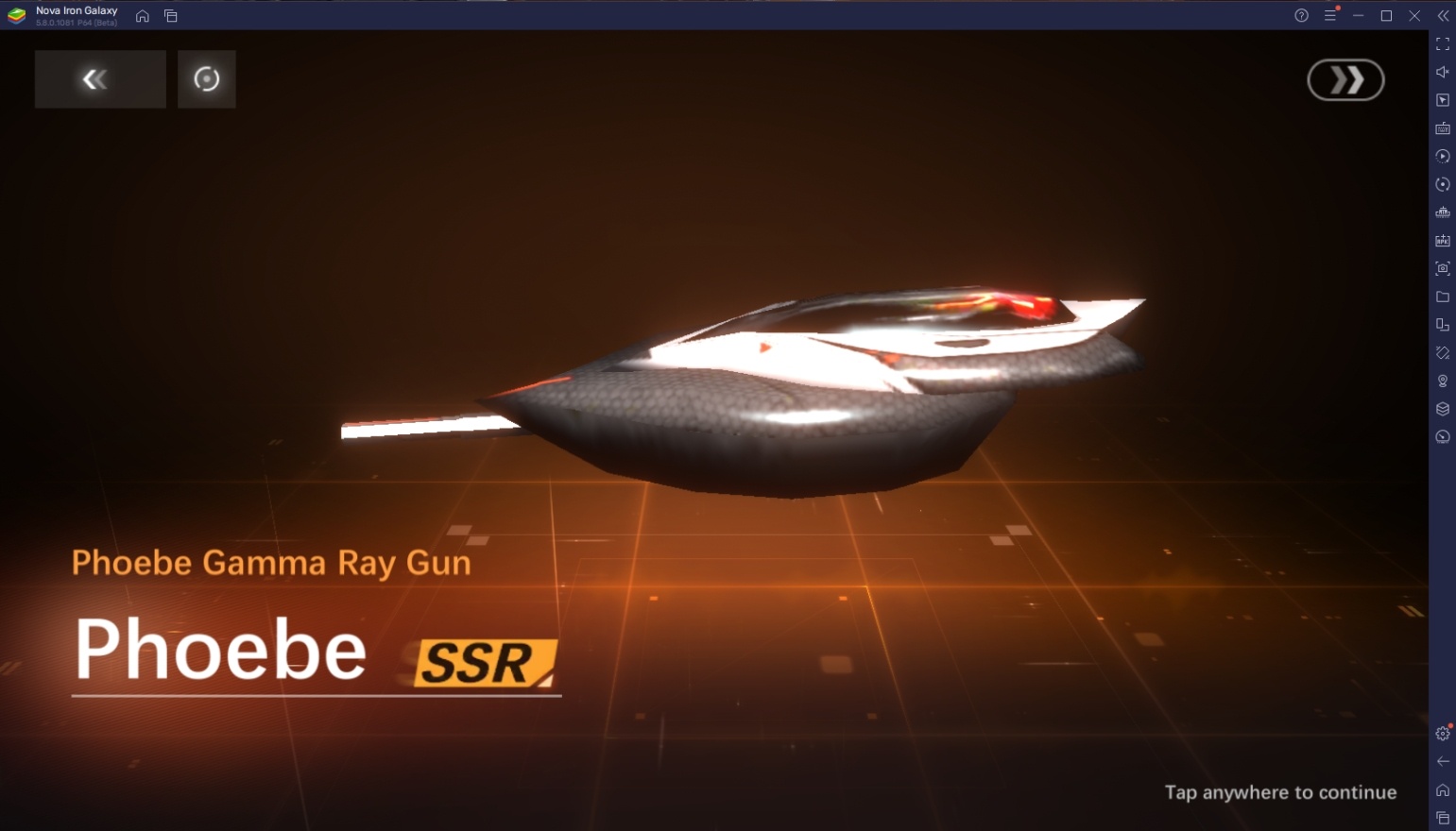
Since higher-rarity components simply have better stats and passive abilities, it’s a good idea to riddle your ships with as many SSR components as possible. However, some components are designed specifically for a certain model of spacecraft, so it’s a good idea to review all your component types before placing them on your ship. If you made a mistake, you can simply remove the component you equipped in the Edit Ship tab of your Ship Center.
Enhancing and Upgrading
Once you’ve equipped the right components on your ship, you can start upgrading and enhancing those components to make your fleet even stronger. Upgrading components require specific materials that can be farmed, so it’s a good idea to be active when completing missions and going out on skirmishes to defeat NPCs. It’s generally a good idea to upgrade any Rare and above component because they are useful for a very long time.
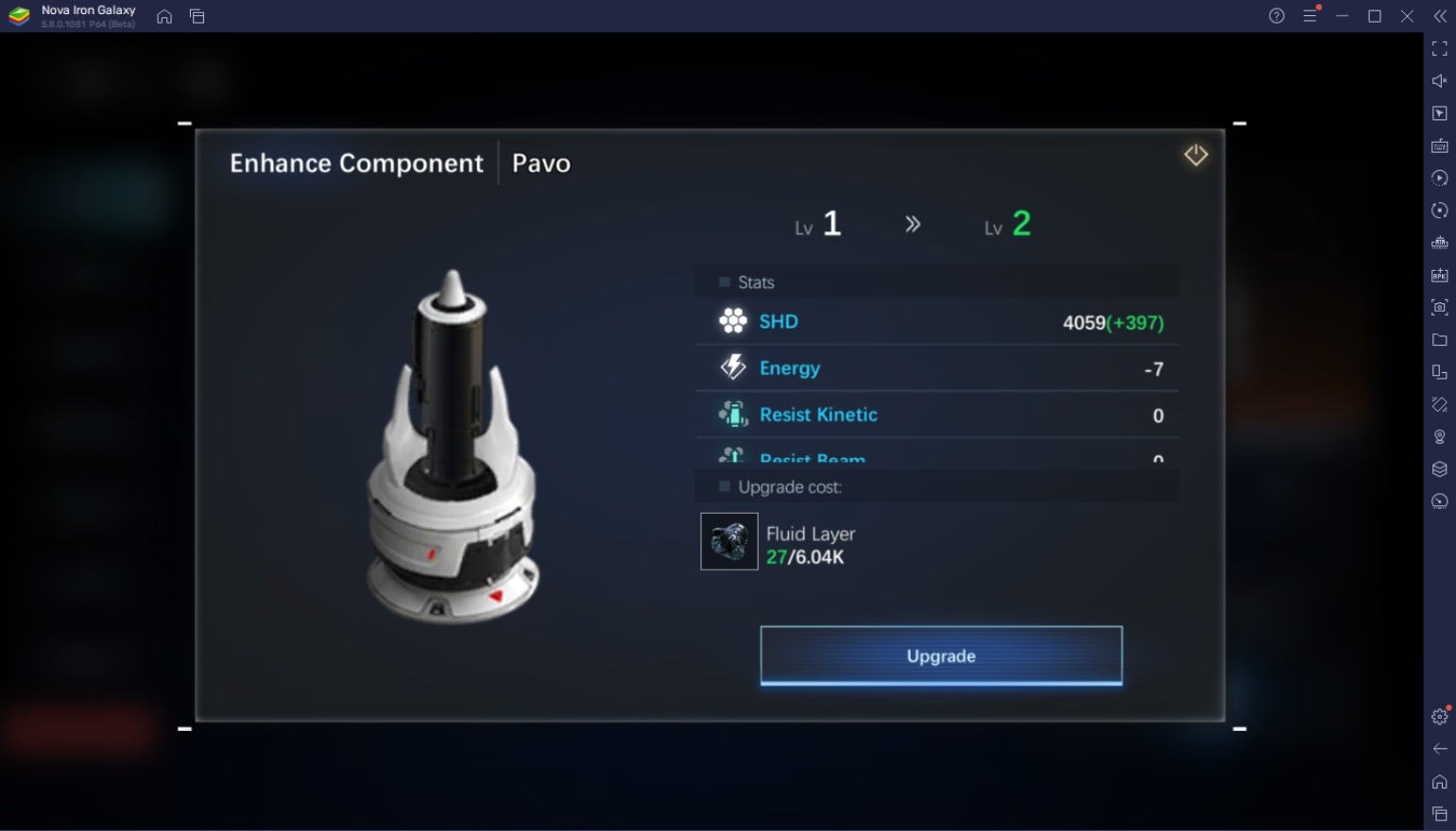
As a general rule, it’s not good to upgrade uncommon materials or below because they are completely useless and will be replaced immediately when you’ve constructed more materials. Be careful when upgrading Rare components because you might overspend on a piece that you won’t even use later on. Elite and Legendary components are good targets for getting maxed out and splurging extra resources on because they last longer as compared to other component types.


